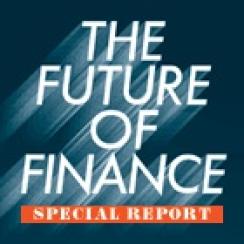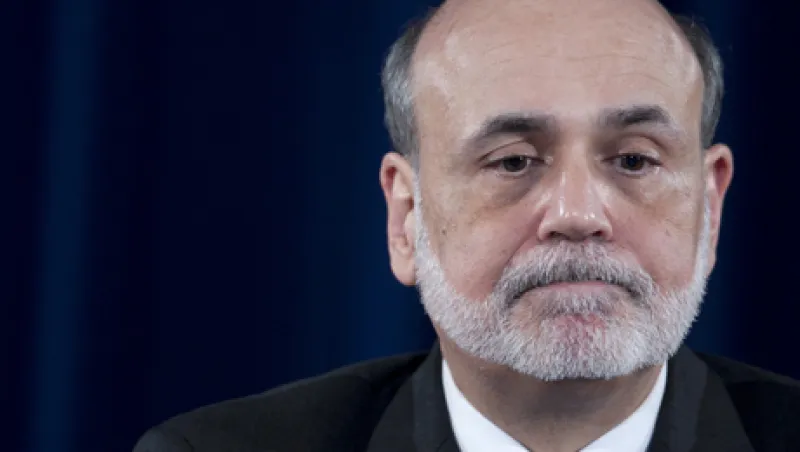
Ben Bernanke carefully primed markets for action by touting the benefits of QE and highlighting his concerns about unemployment in speeches and Congressional testimony prior to the September meeting of the Federal Open Market Committee. If anything, though, the Fed actually exceeded expectations with its decision. Not only did the central bank extend its forward guidance that rates would remain near zero to mid-2015 from late 2014, it committed to buying $40 billion of mortgage-backed securities a month indefinitely in a bid to lower long-term interest rates and spur the economy. That open-ended promise was a big departure from the first two rounds of QE, when the Fed committed to buying a specific quantity of bonds. Moreover, the FOMC statement promised that the Fed would undertake additional bond purchases “if the outlook for the labor market does not improve substantially.”
The Fed hasn’t totally thrown caution to the wind. In an apparent effort to maintain the widest possible consensus in the FOMC, which voted 11–1 in favor of QE3, Bernanke stopped well short of some committee doves, who had advocated purchases of as much as $50 billion to $100 billion a month. But the promise to keep buying bonds indefinitely led some economists to conclude that the Fed was willing to take risks on inflation in a bid to stimulate growth and employment. As Bernanke himself put it in his post-meeting news conference, “What we’re trying to convey here is that we’re not going to be premature in removing policy accommodation, even after the economy starts to recover more quickly; even after the unemployment rate begins to move down more decisively, we’re not going to rush to begin to tighten policy.”
The Fed has clearly tilted toward the employment part of its mandate from the inflation part because of fears that prolonged unemployment will become entrenched, lowering the economy’s long-term potential, writes Gavyn Davies, chairman of Fulcrum Asset Management and a former member of the Bank of England’s Monetary Policy Committee. “That probably means that QE3 will end up being much larger than either QE1 or QE2,” Davies adds. “This is a profound change which eventually could lead the Fed to tolerate inflation above 2 percent, or even to flirt with a nominal GDP target.”
Some other longtime Fed watchers were more subdued. Peter Fisher, head of fixed-income portfolio management at BlackRock, says open-ended purchases could have a greater impact on market expectations than previous rounds of quantitative easing, where the Fed fixed the amount of purchases in advance. But he questions whether the latest initiative represented a real departure.
“Are they describing something quite new and different about the Fed’s reaction function, or are they just reminding us of how they usually behave?” he asks. Fisher suspects the FOMC statement was a reminder. He points out that the Fed was slow to tighten policy in 1994 and again in 2004, when the economy was recovering from previous slumps.
Initial market reaction suggested investors were at least as worried about the potential inflationary impact of QE3 as they were about its potency as a stimulus. Stocks rose on the September 13 announcement but the rally quickly lost steam, with the Standard & Poor’s 500 index up just 1.5 percent three-and-a-half days. The dollar fell by more than 2 percent against the euro, to about $1.30, and yields on the U.S. Treasury’s benchmark ten-year bonds edged up eight basis points, to 1.85 percent.
“What we know from QE2 is that the 20 percent ‘pop’ in stock prices then did not boost consumer confidence enough to offset the damage to real incomes from the 20 percent jump in oil and food prices,” writes Charles Dumas, chief economist at Lombard Street Research in London. “So the economy did not benefit — it slowed. In this case, the rise in stock prices is much more modest, as is the effect on oil and food prices (anyhow boosted by the drought), and the Fed’s move is likely to prove unimportant.”
Fed officials insist that they won’t take risks on inflation in their efforts to foster more employment. “I’m not myself terribly worried that adding assets to our balance sheet will touch off inflationary expectations,” Fed vice chair Janet Yellen told Institutional Investor in an interview, which was conducted before the FOMC meeting. “You don’t see any sign of it in the economy, and there’s no good logical reason why it should occur given that the Fed has tools to exit and to tighten monetary policy no matter how large our balance sheet is. We’re an organization that’s committed to maintaining price stability.”
Unemployment remains persistently high despite three years of unprecedented monetary easing by the Fed, though. The unemployment rate dropped to 8.1 percent in August only because tens of thousands of discouraged people left the job market; the Fed’s internal forecasts, which prompted the QE3 decision, see the jobless rate declining only modestly, to 7 to 7.7 percent by 2014.
The Fed’s dilemma is that most of the economy’s ills are relatively immune to the tools the central bank can wield when its policy rate stands at zero. Consumers continue to struggle with high debt levels and minimal income growth; the housing market has bottomed out, but foreclosures and negative equity are preventing any real recovery; business remains too unsure of the demand outlook to go on a hiring binge; and risks from the euro zone and a slowdown in China are dampening any hopes of an export-led revival. Under these circumstances, bludgeoning long-term interest rates down by another 10 to 20 basis points, or keeping them at these historically low levels for the first half of 2015, won’t magically transform the outlook.
“With policy rates close to zero, it is unlikely that asset purchase measures would lower expectations of future interest rates any further by signalling the future policy stance,” the Bank for International Settlements, the Basel, Switzerland-based central bank for central banks, says in its latest quarterly bulletin, released on September 17.
Bernanke acknowledges the Fed’s constraints. Quantitative easing “is not a panacea,” he said,” he said during the post-announcement press conference. “ It’s not by itself able to solve these problems.” He issued a fresh a plea for the Obama administration and Congress to take action to avoid the fiscal cliff of tax increase and spending cuts due to take effect at the start of 2013, while putting in place credible measures to contain the deficit in the medium term. Ahead of the November election, however, the Fed is the only policy game in town. The risk is that it’s market interventions cause more harm than good.
The Fed, writes Mohamed El-Erian, CEO and co-CIO of Newport Beach, California–based Pacific Investment Management Co., “is operating in policy purgatory: incapable of delivering the good economic outcomes it desires, yet unable to exit from an experimental policy stance that risks a widening array of collateral damage and unintended consequences.”






